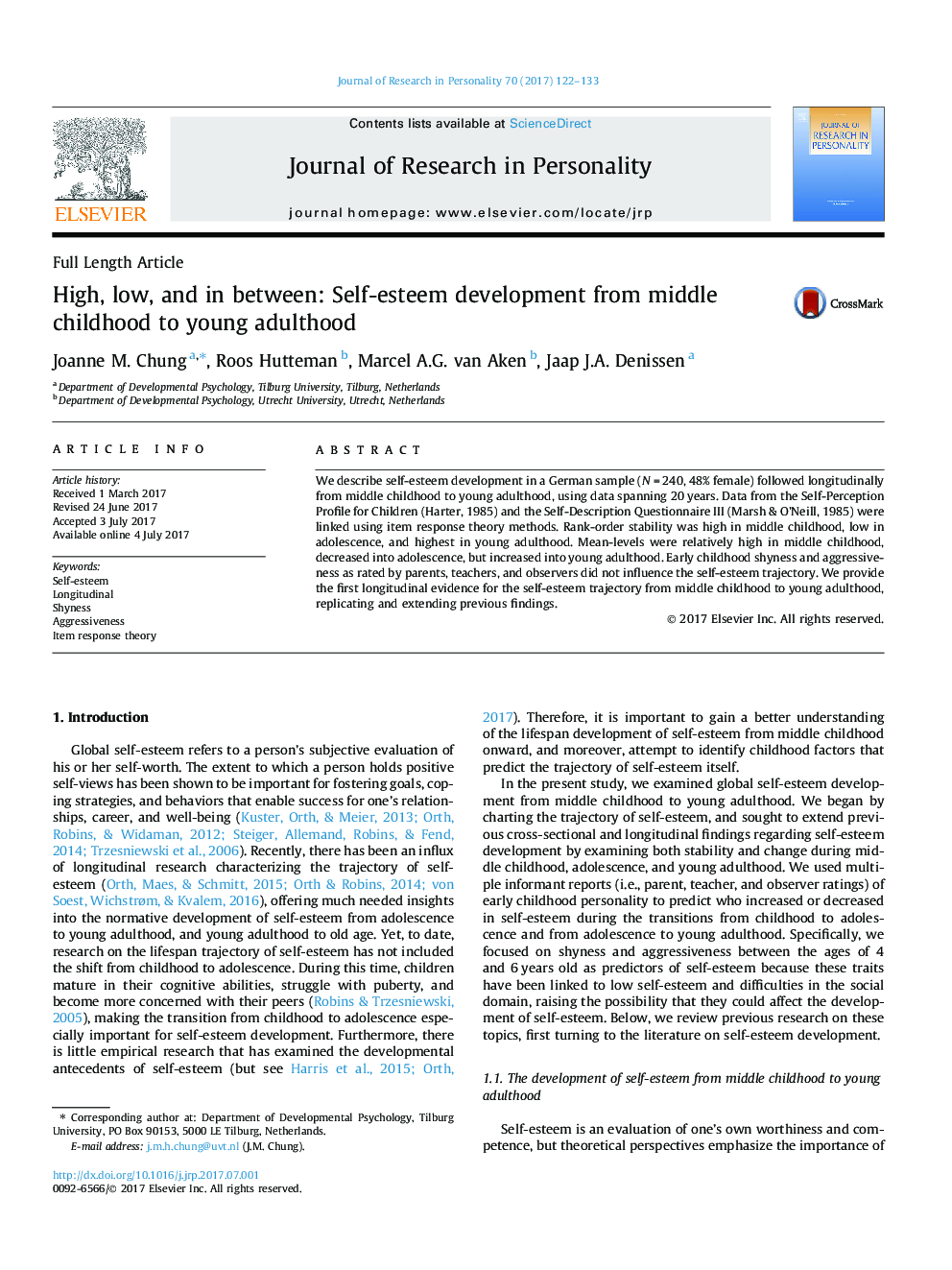| Article ID | Journal | Published Year | Pages | File Type |
|---|---|---|---|---|
| 5046157 | Journal of Research in Personality | 2017 | 12 Pages |
â¢We examined self-esteem in a German sample (N = 240) followed over two decades.â¢We linked data from two self-esteem measures using item response theory methods.â¢Self-esteem was most stable in young adulthood, and least stable in adolescence.â¢Self-esteem declined from childhood to adolescence, and increased into young adulthood.â¢Early childhood shyness and aggressiveness was not linked to self-esteem development.
We describe self-esteem development in a German sample (NÂ =Â 240, 48% female) followed longitudinally from middle childhood to young adulthood, using data spanning 20Â years. Data from the Self-Perception Profile for Children (Harter, 1985) and the Self-Description Questionnaire III (Marsh & O'Neill, 1985) were linked using item response theory methods. Rank-order stability was high in middle childhood, low in adolescence, and highest in young adulthood. Mean-levels were relatively high in middle childhood, decreased into adolescence, but increased into young adulthood. Early childhood shyness and aggressiveness as rated by parents, teachers, and observers did not influence the self-esteem trajectory. We provide the first longitudinal evidence for the self-esteem trajectory from middle childhood to young adulthood, replicating and extending previous findings.
